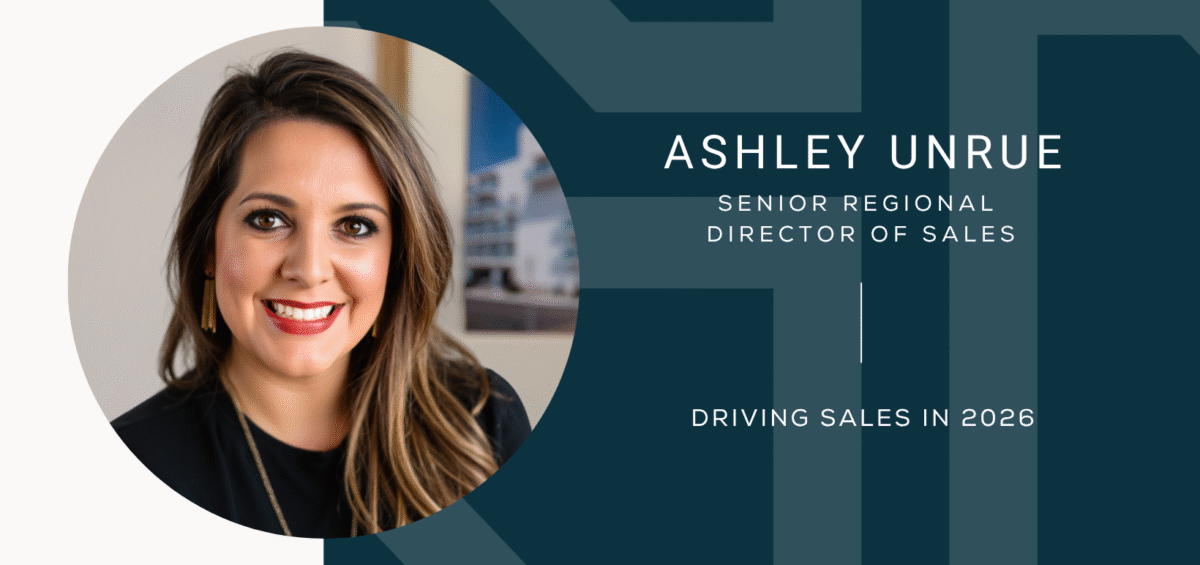Strategies for a Competitive Edge
By Ashley Unrue, CHS, CHSP – Senior Regional Director of Sales
Every fall, sales teams step into the familiar cadence of plans, pacing, and projections. Planning for 2026 asks more, not less: sharper focus, faster alignment, and the discipline to turn good intelligence into better decisions.
The market context is clear enough. Leading forecasters trimmed U.S. growth expectations this summer, a reminder that demand will be uneven by region and segment and that discipline, not noise, will win share. At the same time, baseline expectations still point to steady, modest national gains next year, led by urban markets and supported by gradually improving group and business transient. The takeaway for sellers is simple: there is business to win, but it will not be evenly distributed. Precision matters.
Prospecting must be purposeful. We have better visibility than ever: feeder-market shifts, compression building, and pace that diverges from history. The advantage does not come from more dashboards; it comes from acting on what matters. Use your BI stack—Lighthouse, Kalibri Labs, Demand360—to decide who you call first on Monday, which submarkets you prioritize, and which proposals you tailor for the week ahead. Forward-looking market views should change your calendar, not just your slide deck.
Refining who you court matters as much as how you court them. Growth is coming from travelers who buy confidence and fit: digital nomads who need reliable work settings; wellness travelers who pay for restorative amenities; small corporate retreats that value intimacy over anonymity; affinity groups that expect spaces and experiences that feel like them. The pitch shifts from “rooms available” to “problems solved.” When it makes sense, pair sales and marketing in true account-based campaigns so your message reaches decision-makers with relevance, not volume.
Rate is strategy played out in public. Predictive revenue tools—whether Lighthouse or brand platforms such as GRO or One Yield—should guide when to hold, when to flex, and where to package. Lead with value rather than discount: breakfast where time is tight, parking where it is painful, flexible check-in where travel is unpredictable. Protecting rate integrity is not stiffness; it is clarity about what the stay is worth.
Group business will reward hotels that remove friction. Planners want flexibility without chaos, scalable packages that make right-sizing simple, and confidence that hybrid needs will not turn a three-hour agenda into a three-day production. Make it easy to say yes: virtual site inspections that let decision-makers walk your space in minutes; retreat and bleisure options that make adding a day feel like a smart decision, not a splurge.
Direct channels should feel like an advantage. A mobile-first booking path with transparent pricing, clean room comparisons, and thoughtful upsell flows converts. Loyalty should feel like access that is useful, relevant, and immediate. When a shopper leaves mid-path, retargeting and cart-abandonment touchpoints should be respectful and timely, not relentless. During the stay, meet guests at the moment of decision with SMS or app-based offers such as late checkout after a long day, a quiet workspace in the afternoon, or a table when a meeting runs long.
There is meaningful revenue beyond the room if you design for it. Experience-led packages that pair the stay with something guests actually want—culinary tours, wellness sessions, local adventures—raise average transaction value and give travelers a reason to choose you first. Day-use and subscription models can turn underutilized assets into steady demand from co-working, wellness, or locals-only amenities. Modern revenue systems can automate routine tasks so leaders focus on the commercial decisions that move the needle.
None of this works without alignment. The best sales cultures move as one: sales, revenue, and digital marketing looking at the same signals and committing to the same next actions. That is why we formalized cluster sales meetings this year, in person and on purpose. You can feel the difference. Priorities are clearer, wires are less crossed, and the turn from interest to booking is faster. Technology accelerates the work; people make the call.
We’ve coached teams through enough cycles to know sales is equal parts preparation and poise. Data shows you where to look; instincts and follow-through determine what you win. In 2026, success won’t belong to the loudest sellers but to the most aligned—see demand clearly, build value before you quote, keep your huddles tight and your response time tighter, and lead with judgment. When opportunity shows up, move first, with grace, all the way to the finish.



Leave a Comment